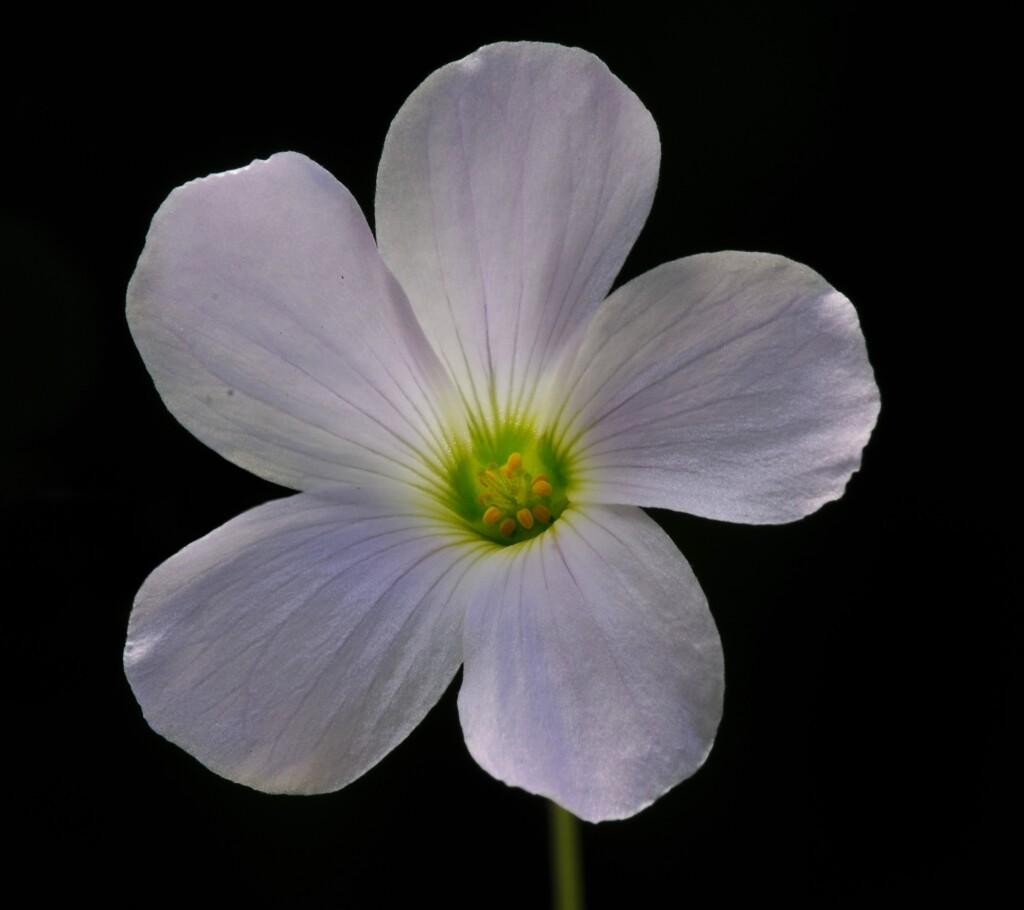Oxalis incarnata
L. Pale Wood-sorrelHerb with erect or somewhat spreading stems, 5–30 cm long, branched, glabrous or very sparsely pubescent on younger parts; rhizome slender, 3–8 cm long; bulbs ovoid, to c. 2 cm long, beaked, tunics pale brown, papery; bulbils formed on rhizome and in leaf-axils. Leaves crowded at ends of branches, mostly 4–10 in pseudowhorls, 3-foliolate; leaflets subsessile, mostly broadly obcordate, 5–15 mm long, 8–20 mm wide, bilobed, green, often greyish below, glabrous, near-marginal calli present, sinus to c. one-quarter leaflet length, lobes oblong, apices rounded, 7–10 mm apart; petioles 1–7 cm long, glabrous; stipules membranous, to c. 3 mm long, tapering into petiole. Inflorescences axillary, 1-flowered; peduncles longer than leaves, glabrous. Sepals oblong, 4–6 mm long, virtually glabrous, with several converging light brown calli near apex. Petals 13–22 mm long, very pale lilac or pale pinkish-purple, greenish at base. Capsule not developed in Australia. Flowers mainly Aug.–Jan.
VVP, GipP, OtP, WaP, Gold, CVU, GGr, NIS, EGL, HSF, HNF, OtR, Strz, VAlp. Also naturalised WA, SA, NSW, Tas. Native to South Africa. A common and troublesome weed of gardens and some bushland areas, tolerating deep shade.
Conn, B.J.; Jeanes, J.A.; Richards, P.G. (1999). Oxalidaceae. In: Walsh, N.G.; Entwisle, T.J., Flora of Victoria Vol. 4, Cornaceae to Asteraceae, pp. 207–218. Inkata Press, Melbourne.
 Spinning
Spinning




